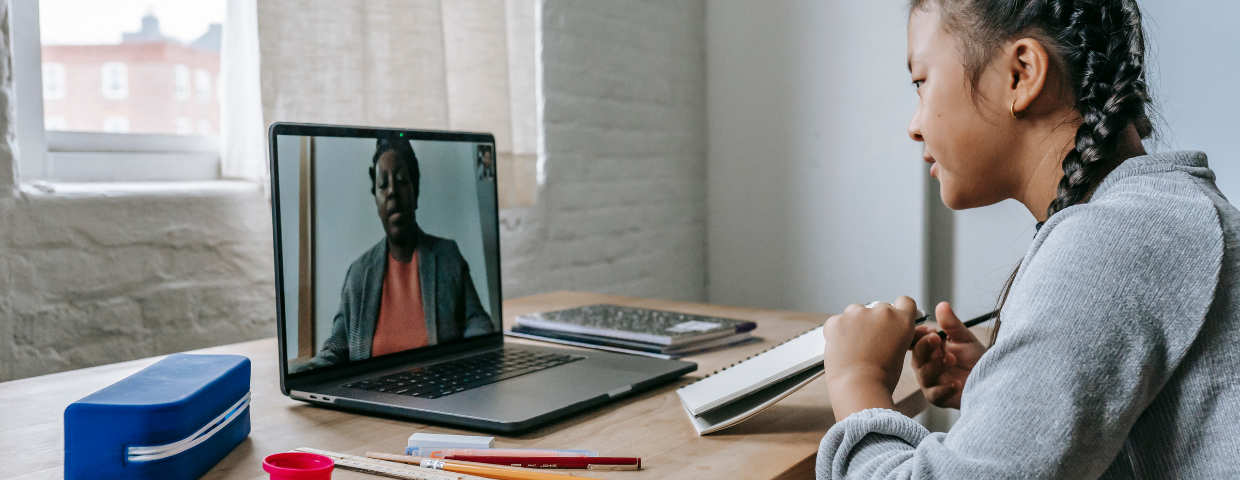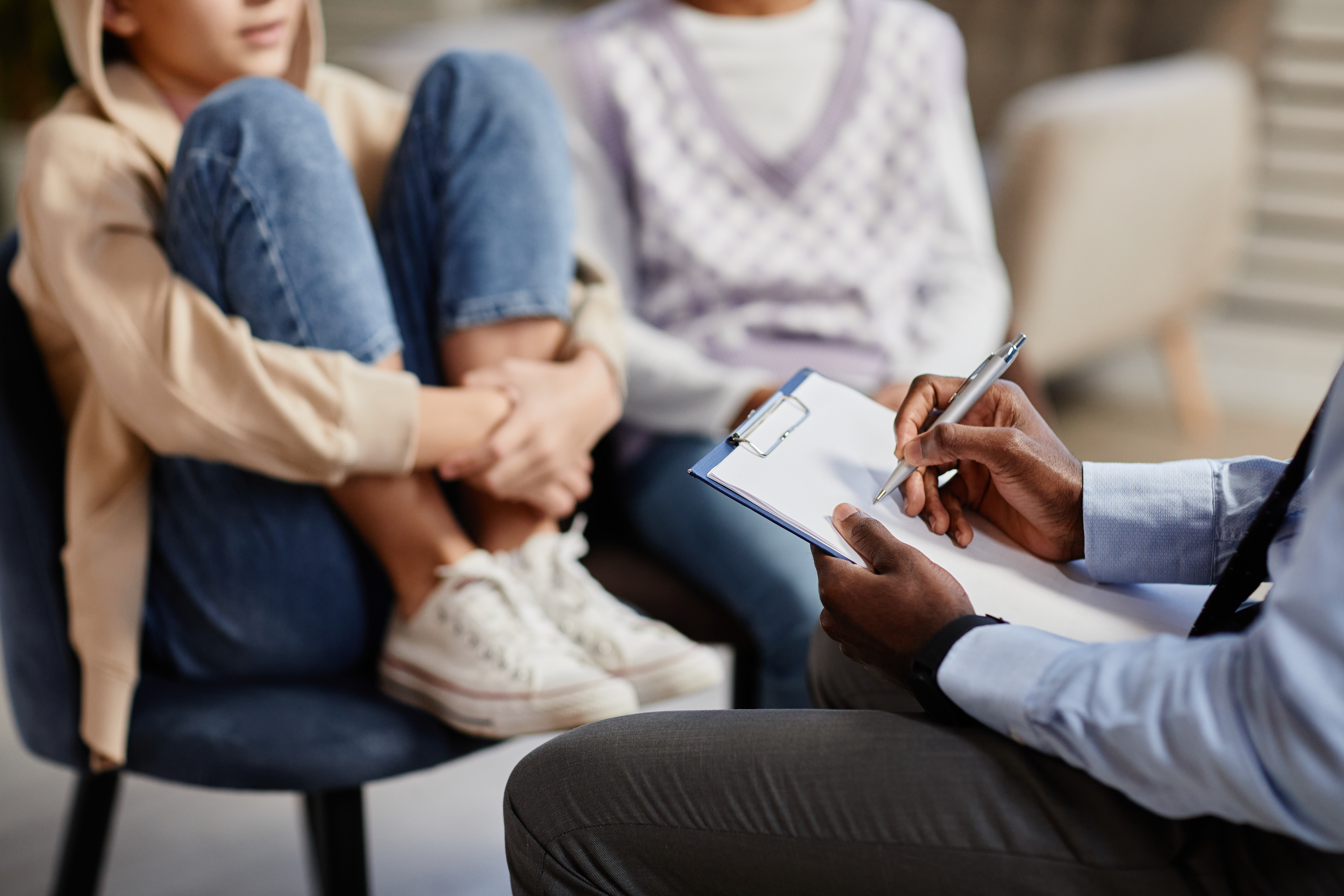Idaho Youth Ranch
Subscribe to our blog
.png?width=1240&name=Untitled%20design%20(56).png)
Over the past few months, we’ve faced drastic changes and heartache as a result of the novel coronavirus pandemic. On a grand scale, both the residents of Idaho and our global society have have struggled to adjust to a new norm—a "stay-at-home era" as schools and businesses close, and those not considered "essential workers" face layoffs and work-from-home orders while we wait for COVID-19 to pass.
Parents are navigating these new and scary waters for going back to school with limited support and resources, creating a new sort of strain for families across Idaho.
In an effort to assist students and families during this time, the state board has instructed school districts to:
- Develop and rollout plans for remote, distance learning using the Internet, video, and teleconferencing
- Support families with food services who are in need
- Provide childcare for those who are essential workers
- Form a plan to provide special education-related services
Adjusting to a New Norm: Distance Learning from Home
First and foremost, it’s important to know that we are all in this together. If you or your kids are struggling to adjust, this is completely normal. You certainly are not alone. Be kind to yourselves and let your family know that it’s okay if they haven’t acclimated to these changes just yet. It’s entirely normal for the first few weeks of any life adjustment to be the most difficult, and if it takes longer than this to adjust, that’s also okay. Everyone adapts to change at their own pace, and it’s especially tricky when there are public threats to health and safety, and the freedom to do what we please. This can make life difficult for anyone.
How to Make Online Schooling Easier
Here are some tips and suggestions to aid you and your family as you navigate remote learning. There are many different steps families can take to ensure everyone is as secure and comfortable as possible. Not all of these will work for everyone, but we've created
Have a Family Meeting
It may help to have a family discussion to explore the thoughts and feelings your kids have and plan how you want to move forward as a family through the rest of the school year. Those who are facing extreme emotional turmoil or distress may find that diving back into school immediately is not the best option for them. Some may decide that it’s best to ease into school slowly, while others may want to resume with business as usual. Make the decision that is best for your family and your unique circumstances at this time.
Create Structure
When adjusting to life as we know it from home, it helps to have structure similar to what your kids were accustomed to on campus. This means that getting up in the morning and sticking to the usual morning routines, then following a planned schedule for the day, as opposed to sleeping in, and/or spending more time than usual playing video games, etc. will ultimately help kids adjust and succeed. Having structure and a good routine in place will help optimize learning potentials and get your online learners in the right mindset for school.
Form a Plan
During your family meeting or afterward, sit down with your kids and create a daily schedule that sets aside a specific amount of time for each school subject, lunch and socializing, short breaks or snacks, recess or exercise, and for focusing on special interests, such as talents, hobbies, etc. The more the schedule resembles the structure of a school day, the better, although you’ll have more wiggle room and freedom to control how you and your kids want to approach each day.
You may want to schedule the most difficult subjects for earlier in the day so as to optimize on the times when your kids will have the most brain power and focus, while leaving easier subjects for the afternoon. It really depends on the type of learners your kids are. Some learners work well independently, while others require a bit of instruction. Make a plan that works best with your kids and your schedule to ensure they have all the support they need along the way.
Stay Connected
It’s also helpful to encourage kids to stay in contact with their friends during these times. Isolating ourselves physically may be a requirement to stay healthy, however, it doesn’t mean that we should be isolating ourselves on all social levels.
Staying connected with others is one of the best things you and your kids can do to cope with these changes right now. Make time in your schedule for some group video chats with friends and family so you and your children feel less isolated during this time. Jump on FaceTime or Zoom, etc. to connect with others and encourage and/or assist your kids in doing the same.
You may also want to form an online support group for parents of students in your community. This will be a great place for parents to vent, give support, and share tips, strategies, and learning resources with one another.
If you need help or think your child might be struggling, click here to connect with Idaho Youth Ranch about options for your family.
Schedule Daily Outdoor Time
Vitamin D is an essential nutrient that can help ward off some of the negative symptoms that stress and adjusting during this time can bring. Getting your daily dose can be achieved by spending 10-15 minutes each day in direct sunlight before any sunscreen is applied to the skin. Afterward, if you’re going to remain in the sun, do use sunscreen. Those who live in areas without much direct sun during this time of year can add a Vitamin D supplement, or Vitamin D rich foods to their family’s diet.
Vitamin D rich foods include:
- mushrooms
- fish
- eggs
As well as fortified:
- milk
- non-dairy milk substitutes
- orange juice
- cereal
- yogurt
- tofu
Proper nutrition is important for everyone. If you’re in need of some extra support, it’s important to reach out to your school district for a list of available options to ensure your children are getting the nutrition they need to support their overall health and learning.
Give Kids the Freedom to Explore
As a part of the new daily school schedule your family puts together moving forward, allow your kids to have a say in an area they’d like to explore and learn more about that they didn’t have time to really dive into while they were attending school on campus. A benefit of attending school from home is that the learning process can sometimes move faster than it does in the classroom.
For starters, less time spent roaming the halls from one class to another, waiting for 30 or so students to settle into each class, the teacher maintaining control of the classroom while answering several student’s questions, or on making sure a large classroom is grasping the concepts covered can translate into spare time to indulge in another field of study.
Allow your children to choose an area of study they’d like to learn more about. This will make the day more fun and add some excitement to the learning process. When kids can explore the topics of their choice freely and take some ownership and control in their own educational experiences, it can be of great benefit, especially during these times when they cannot do what they want to do outside of the home. This is something they have a say in and can oftentimes find a sense of freedom and passion in pursuing.
Set Up Designated Learning Spaces
Allow your kids to set up a designated learning space where they can go specifically to focus on school. This could be a desk, a cozy corner with a chair, or a variety of different learning stations that can be visited throughout the day to switch up the environment and keep things moving as they do for students who change classrooms each period. Keep this area neat and free of clutter so as to promote focus and attention toward studies. After some time, these spaces will become associated with school, which can help kids transition from a home-focused mentality into a school-focused mentality while learning from home.
Call Your Kids’ Teachers
Talk to your kids’ teachers to gain a better understanding of what you will need to best support them through the remainder of the school year. Find out if there is an online learning platform that will be used to continue the year, any curriculum supplements recommended, or resources that can help your new distance learners achieve their desired outcomes.
Offer Incentives, Set Time Limits, and Deadlines
According to Justin Reich, a researcher at MIT, “Online learning is really hard for a lot of people. It requires a lot of self-regulated learning skills.” Due to this reality, it can sometimes help to have limits, deadlines, and incentives in place. For instance, a student may be more motivated to complete an in-class assignment when there is a time limit set, or deadlines for projects they are working on over the course of several days. Incentives such as rewards or extra video game time may also be used to help motivate them to independently work toward achieving their goals.
Distance Learning Tips for Elementary Students
It can feel difficult when you have elementary age kids feeling trapped or stuck at home all day, especially if you are also working from home and feeling a bit stir crazy yourself. The good news is that with a bit of planning and attention to guiding your kids through this transition, you can help them adjust and work toward completing the school year at home successfully.
Encourage Kids to Express Their Feelings
It’s likely that your kids are having some feelings and reactions to the restrictions that have been put in place. Allow them to express themselves and process these feelings. It will help them to develop their emotional intelligence and ultimately become more successful in the future.
According to a TalentSmart research study, IQ will only factor into a person’s future success up to a certain point, while 58% of success depends on emotional intelligence. A good way to encourage children to open up about their emotions is by teaching them about emotions.
Depending on the age and emotional aptitude of your child, you may want to dive into more advanced emotions by providing an emotions list. For younger children, the primary emotions are a great place to start. Psychologist Paul Ekman identified six primary emotions in the 1970’s that can be recognized in others and ourselves through facial expression. The six emotions include:
- Happiness
- Fear
- Sadness
- Surprise
- Disgust
- Anger
Teaching children healthy ways to express their emotions can be fun, and even turned into an arts and crafts project. Start by having them draw each of the 6 facial expressions on 3, 2-sided paper masks with a tongue depressor handle or an elastic band so they can wear the mask that expresses how they feel in each moment. You could even make mood bracelets representing each different emotion as a fun activity, and there are also flipbooks available that can help your child learn to express emotions in a healthy way.
Allow Plenty of Time for Play!
When children are young, they learn about the world and express themselves through play. This is especially important during times of adjustment. Many child psychologists use play therapy as a form of healing for children who have been through trauma, and so do not hold back on allowing your children to schedule in some sessions for screen-free play and recess throughout the day.
If your child is having a particularly difficult time, you may also want to consider scheduling some telehealth sessions with a child psychologist to help process emotions and adjust to the new routine for the remainder of the school year. If your child has special needs, it’s important to advocate and reach out to your school district to set up the type support your child needs during this time as well.
Encourage Plenty of Physical Activity
One of the best ways to stay grounded and focused throughout the day is by getting in a decent amount of physical activity. This will help keep kids healthy and strong, and also use up some of the extra pent up energy staying at home can cause. If you have outdoor space where kids can play, this is great. If not, it’s extra important to get outside of the house and go on walks while practicing social distancing. If you want to burn off some energy indoors, have a dance party in your living room, or play a guided children’s exercise or dance video so the kids can have a dance party in a safe space.
Use Supplemental Resources as Necessary
Sometimes the availability of online learning resources can be overwhelming and finding the right option to use may seem daunting. Prioritize these from the beginning and start with selecting a favorite few, as guided by teachers, your support group, etc. You can always build from there.
Some helpful resources for online elementary students to consider are:
- Prodigy Math Games
- Outschool
- Scholastic Books
Distance Learning Tips for Middle and High School Students
Transitioning into life at home while practicing social distancing can be devastating for middle and high school students. These are times in their human development when friends are everything and not being able to see their peers everyday can feel like torture. There will likely be some resistance to this new way of life for the short-term, but with patience, education, firm boundaries, and some attention to the physical and mental well-being of your middle and high school aged kids, it is possible to experience success and positive experiences during these times.
Check in and Offer Support
There may be a lot going on in the minds of your kids right now, and so it’s important to check in with them and have open and honest discussions about what they are going through during this time. School counselors may not be available to meet with your kids on campus any longer, but they may be available for telehealth sessions upon request if your son or daughter expresses the need to talk to someone for extra support. You may also want to consider additional online therapists, group therapy sessions, or support groups available using HIPAA compliant video conferencing platforms. Many therapists are choosing to work from home using telehealth during this time, and some are volunteering their hours to help families through telehealth at this time.
Talk About The Missed Events
Adolescents can have complex and confusing emotions without the added stress of a pandemic causing them to stay home for the rest of the year. There are likely many social events and activities that they’re missing out on right now, and this can make anyone feel sad or like life is unfair. These are valid frustrations and feelings of loss, and while there may be those in the world going through things that appear much worse, this does not mean that these feelings are not valid or okay. Missing spring break, prom, not taking the SATs, or having a proper exit from high school to graduation can be huge let downs for many students this year. Empathizing and showing your support can be very healing and helpful right now. You may also want to encourage them to keep a journal or find a create or active outlet for expressing their emotions during this time.
Schedule Time for Exercise
Keeping a daily exercise routine is going to be a major benefit to help adolescents during the stay-at-home order. Exercise helps regulate mood, and it’s also grounding, which can help improve mental health and focus throughout the day. It also will help keep your kids healthy. While social distancing must be observed, this doesn’t mean that you cannot step outside for a run or a bike ride, practice yoga from home, or set up a daily exercise routine without gym equipment.
Use Select Supplemental Resources
While not all supplemental resources are created equal, and the options are seemingly endless, here are some popular online learning resources for middle and high school students.
Middle School Online Learning Resources:
High School Online Learning Resources:
You've Got This
All in all, if you can help your kids develop a positive state of mind and focus on the benefits this temporary change has brought, it can help them push through the rough times as they work toward finishing the school year successfully. As a family, it can also help to focus on what you’d like life to be like once the stay-at-home order and social distancing end. Think of some goals you’d like to achieve, and projects you can do from home that will help you reach these goals faster once life as we know it goes back to normal. Keeping your kids optimistic about the future is important. While things may seem scary or bleak right now, we are all in the same boat working to get through this, one day at a time.
If you’d like to learn more about additional resources to support your family through COVID-19 or the services we provide at Idaho Youth Ranch, please do not hesitate to contact us. We’re here for you.








Leave a Comment